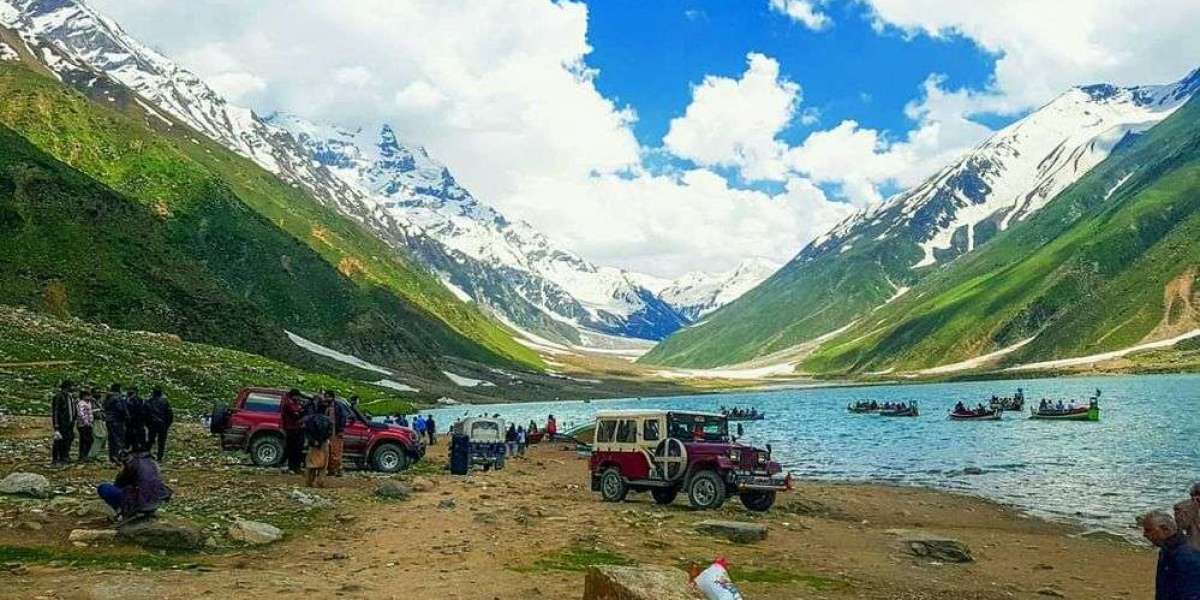Introduction – Why Pakistan is a Traveler’s Paradise
When it comes to breathtaking landscapes, ancient history, and warm hospitality, few destinations rival Pakistan. Often called “Asia’s best-kept secret,” this country offers a perfect blend of adventure, culture, and tranquility. Whether you’re a thrill-seeker, history enthusiast, or someone who just wants to escape into nature, Pakistan has something for everyone.
From the majestic peaks of the Karakoram Range to the tranquil beaches of Balochistan, Pakistan’s geography is as diverse as its people. Every corner tells a story—of civilizations, empires, poets, and artisans who shaped this land. If you’ve ever dreamed of exploring untouched valleys, ancient forts, or colorful bazaars filled with aromas of spices and tea, it’s time to pack your bags and Explore Pakistan like never before.
This guide will take you through Pakistan’s most enchanting destinations, cultural treasures, and adventure opportunities that will make you fall in love with this incredible country.
The Cultural Richness of Pakistan
Pakistan is a melting pot of history, heritage, and vibrant traditions. Its diverse regions—Punjab, Sindh, Khyber Pakhtunkhwa, Balochistan, and Gilgit-Baltistan—each offer a unique cultural experience. From the Sufi shrines of Multan to the ancient ruins of Mohenjo-Daro, the country’s cultural depth is truly fascinating.
Ancient Civilizations and Historical Marvels
Pakistan’s history stretches back thousands of years, to the cradle of civilization itself—the Indus Valley Civilization. The ruins of Mohenjo-Daro and Harappa reveal the brilliance of one of humanity’s earliest urban societies. Wander through these ancient cities and you’ll find remnants of advanced architecture, drainage systems, and art that tell tales of a sophisticated culture long before modern times.
Then there’s Taxila, a UNESCO World Heritage site that was once a hub for Buddhist learning. The ancient monasteries and sculptures found there showcase the deep spiritual roots of the region.
Moving ahead in time, you’ll find forts like Lahore Fort, Rohtas Fort, and Baltit Fort, each narrating stories of empires that ruled the subcontinent. These historical landmarks are more than tourist attractions—they’re living pieces of Pakistan’s soul.
Traditions, Festivals, and Local Hospitality
If there’s one thing Pakistan is known for, it’s hospitality. Locals treat visitors as family, often inviting them to share a meal or cup of tea. Whether you’re in a bustling city or a remote mountain village, you’ll experience kindness and warmth everywhere.
The country’s festivals are equally heartwarming. From the colorful Basant Festival in Lahore, celebrating spring with kites and joy, to Shandur Polo Festival in Gilgit-Baltistan—known as “the roof of the world”—Pakistan’s celebrations are full of life and tradition.
Each province has its own music, dance, and crafts. In Punjab, folk music and bhangra dominate; in Sindh, you’ll hear soulful Sufi tunes; while the tribal regions of Khyber Pakhtunkhwa celebrate with rhythmic drumming and traditional attan dances.
The Natural Wonders of Pakistan
When it comes to natural beauty, Pakistan is blessed beyond measure. It’s home to towering mountains, lush green valleys, crystal-clear lakes, and serene meadows that leave travelers speechless.
Majestic Mountains of the North
Pakistan’s northern areas are nothing short of magical. The Karakoram Range, Himalayas, and Hindu Kush house some of the world’s highest peaks—including K2, the second-highest mountain on Earth.
Regions like Hunza Valley, Skardu, and Fairy Meadows attract adventurers and nature lovers alike. Imagine waking up surrounded by snow-covered peaks and turquoise lakes—it’s a sight that words can hardly do justice to.
Hunza, with its apricot blossoms and historic forts, feels like stepping into a fairy tale. Skardu offers gateways to famous trekking routes like Concordia and K2 Base Camp, while Fairy Meadows—aptly named—is one of the most beautiful camping sites in the world.
Scenic Valleys, Lakes, and Waterfalls
Beyond the mountains, Pakistan’s valleys offer tranquility and charm. Swat Valley, known as the “Switzerland of the East,” is full of rivers, forests, and waterfalls. Kalam Valley and Malam Jabba are ideal for hiking and winter sports.
Lakes like Saif-ul-Malook, Attabad Lake, and Ansoo Lake are not just visually stunning—they’re steeped in folklore and legend. Waterfalls in Neelum Valley and Kaghan Valley make these regions perfect for photographers and peace-seekers alike.
The Southern Charm – Deserts and Beaches
While the north is known for its mountains, southern Pakistan boasts golden deserts and serene coastlines that offer a completely different experience.
Thar Desert and the Culture of Sindh
Stretching across Sindh and Rajasthan, the Thar Desert is a land of contrasts—arid yet full of color. Locals here live in harmony with the harsh environment, maintaining centuries-old traditions.
In towns like Mithi and Umerkot, you’ll find mud houses adorned with hand-painted designs, women dressed in vibrant attire, and the sound of folk instruments echoing across the dunes. The Thar Festival showcases local crafts, camel races, and music—a perfect blend of culture and adventure.
Coastal Escapes – From Karachi to Gwadar
Pakistan’s coastline, stretching over 1,000 kilometers along the Arabian Sea, is a hidden gem. Karachi’s Clifton Beach offers urban relaxation, while Ormara and Gwadar boast pristine, untouched beauty.
Astola Island, Pakistan’s only coral island, is perfect for snorkeling and camping. Meanwhile, Kund Malir Beach in Balochistan, part of the Hingol National Park, combines desert landscapes with turquoise waters—a sight unlike anywhere else in the world.
Adventure Tourism – For the Brave and Curious
Pakistan isn’t just about sightseeing—it’s a playground for adventure lovers. From mountain climbing to desert safaris, the options are endless.
Trekking, Hiking, and Mountaineering
Northern Pakistan is a paradise for trekkers. Routes like Rakaposhi Base Camp, Nanga Parbat Base Camp, and Concordia are among the most challenging yet rewarding in the world. Trekkers encounter glaciers, alpine meadows, and breathtaking panoramas at every step.
Whether you’re a beginner or an experienced mountaineer, the thrill of scaling Pakistan’s peaks is unmatched. Plus, the hospitality of local guides and porters makes every expedition memorable.
Paragliding, Rafting, and Desert Safaris
For those seeking adrenaline, paragliding in Hunza, white-water rafting in Swat, and jeep rallies in Cholistan Desert offer unforgettable thrills. Adventure tourism in Pakistan is on the rise, drawing both local and international daredevils to its rugged landscapes.
The annual Cholistan Jeep Rally is a must-see event, combining speed, sand, and culture in a spectacular setting.
Pakistani Cuisine – A Journey of Flavors
Food is the heartbeat of Pakistani culture. From spicy street food to aromatic home-cooked meals, every dish tells a story.
Start your culinary journey in Lahore, where the streets of Food Street near Badshahi Mosque offer sizzling kebabs, biryani, and tandoori specialties. Move to Karachi for the perfect nihari and biryani, or visit Peshawar for its legendary chapli kebab.
Sweet lovers can’t miss gulab jamun, jalebi, and kheer—desserts that define Pakistan’s sweet tooth. And of course, no trip is complete without a cup of chai shared with locals under the stars.
Local Markets and Handicrafts – Shopping with a Story
Pakistan’s bazaars are a treasure trove of culture and craftsmanship. In Lahore’s Anarkali Bazaar, Karachi’s Zainab Market, and Peshawar’s Qissa Khwani Bazaar, you’ll find handmade jewelry, embroidered shawls, pottery, and leather goods.
Every product carries a legacy—crafted by artisans who’ve perfected their skills over generations. Buying from these markets not only gives you beautiful souvenirs but also supports local communities and keeps traditional art alive.
How to Plan the Perfect Trip Across Pakistan
Planning your journey through Pakistan is easier than ever. Domestic flights connect major cities, while scenic highways like the Karakoram Highway make road trips unforgettable.
The best time to visit depends on the region:
Northern areas: April to October (for pleasant weather)
Southern regions: November to February (for cooler temperatures)
For a smoother experience, work with local travel experts who understand routes, cultures, and customs. Websites like Third Escape offer travel guides, curated tours, and resources to help you design your perfect Pakistani adventure.
Conclusion
Pakistan is not just a destination—it’s a feeling. It’s where mountains touch the sky, history whispers through ancient walls, and people greet you with open hearts. Whether you’re chasing adventure, culture, or serenity, this land has something that will stay with you forever.
FAQs
1. Is Pakistan safe for tourists?
Yes, Pakistan has become increasingly safe for travelers, with improved infrastructure and hospitality toward foreign visitors.
2. What’s the best time to visit northern Pakistan?
April to October offers the best weather for exploring valleys, mountains, and lakes.
3. Do I need a visa to visit Pakistan?
Most travelers can apply for an e-visa online, making the process simple and fast.
4. What’s the local currency in Pakistan?
The Pakistani Rupee (PKR) is the official currency. Major cities have ATMs and currency exchange facilities.
5. What should I pack for a trip to Pakistan?
Pack according to your destination—warm clothes for the north, light outfits for the south, and comfortable shoes for exploring.



